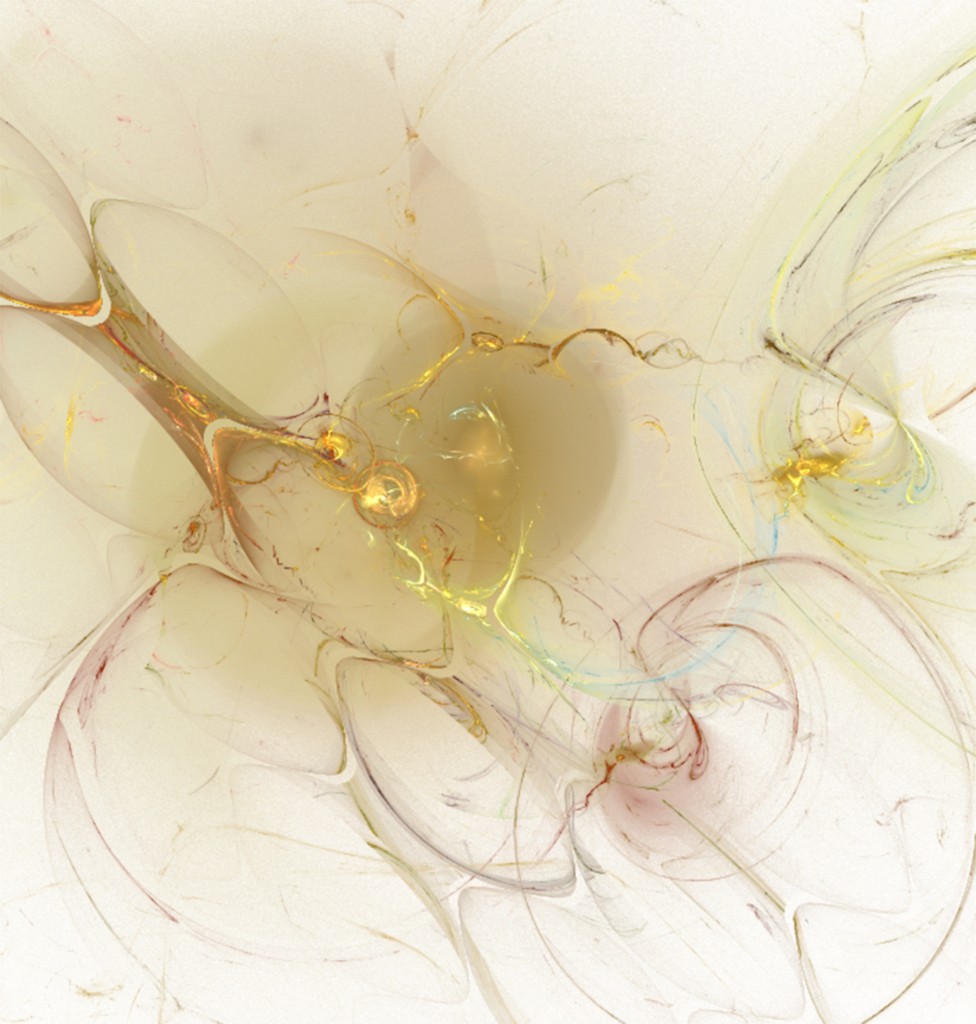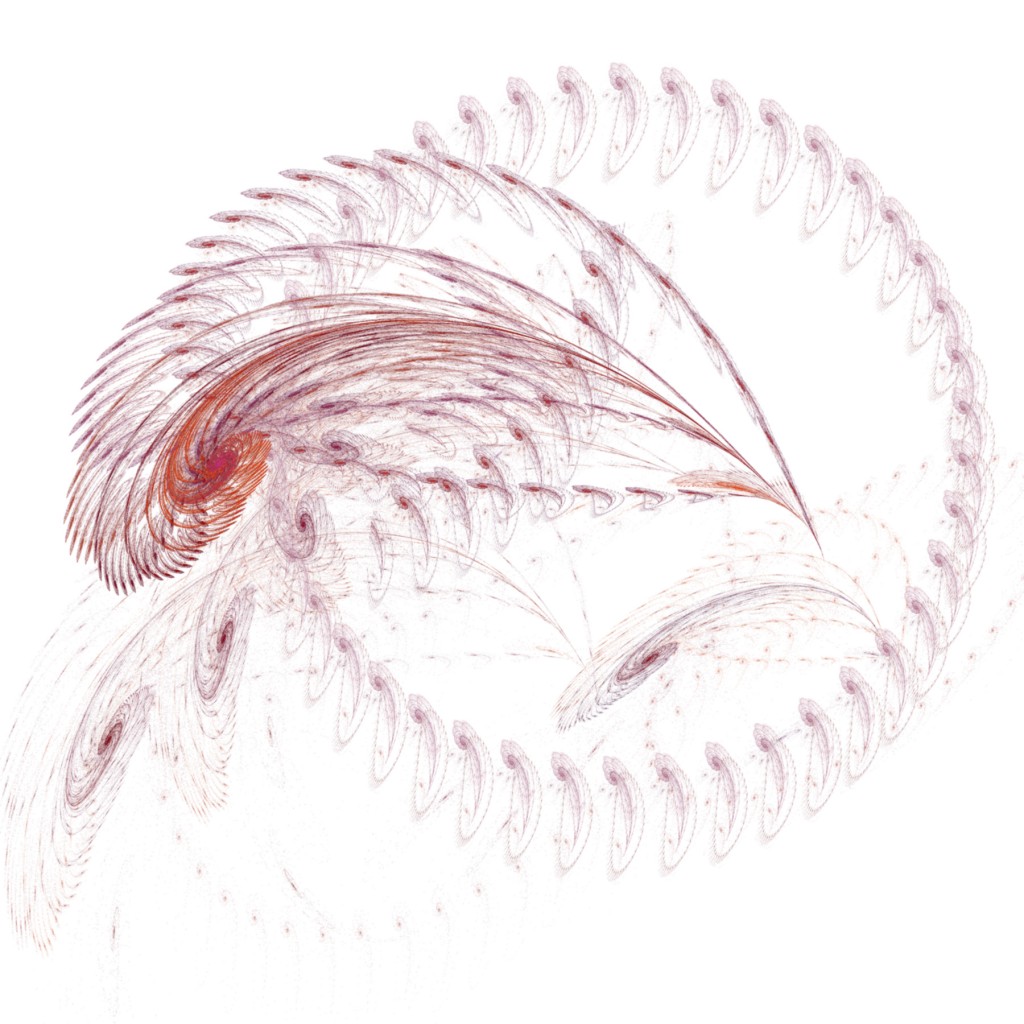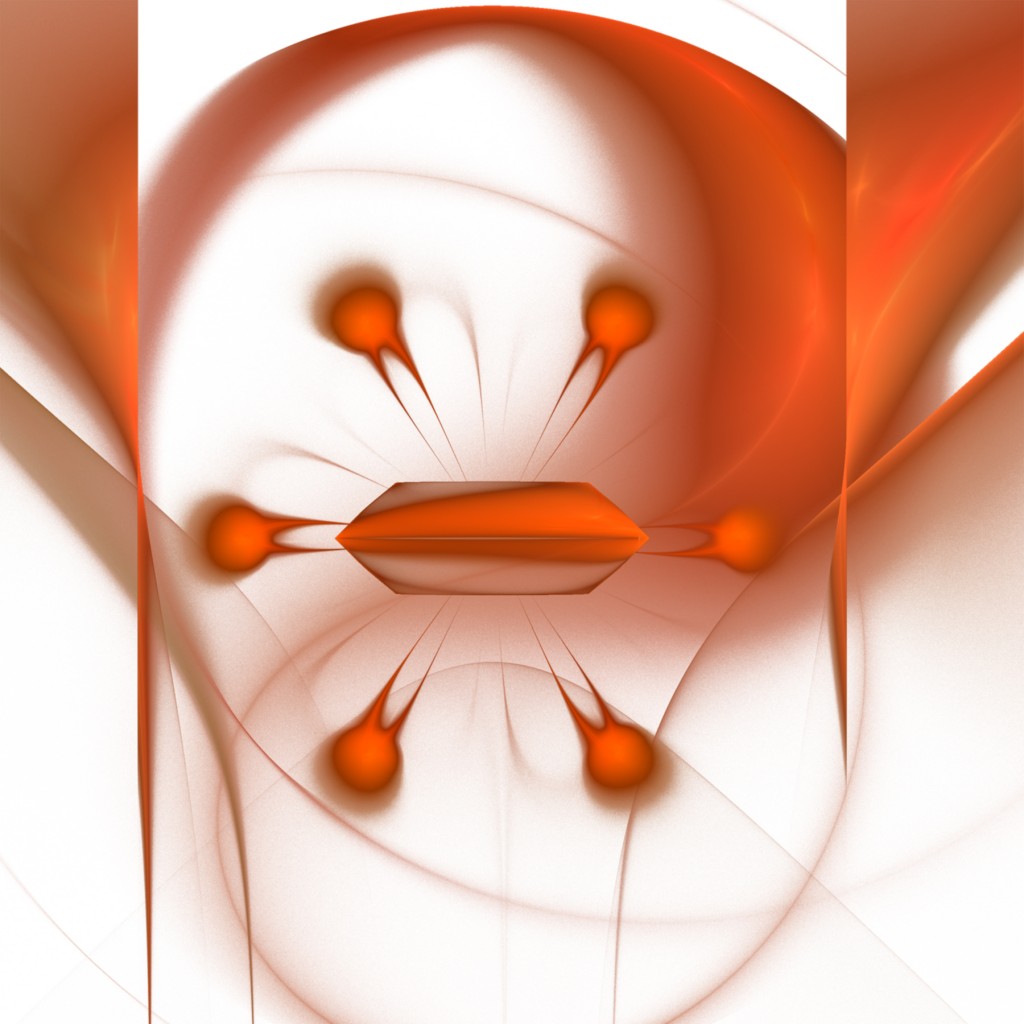 About Fractal Flame Designs
About Fractal Flame Designs
My designs are the result of collaboration between me, a human artist, and a computer program. They are based on “fractal flames,” a mathematical construct capable of creating great complexity from relatively simple equations. The program provides various parameters that I can manipulate using my color sense, my knowledge of the theory and experience with the medium, and an element of random chance to create aesthetically intriguing patterns. It then “crunches the numbers,” executing the vast number of calculations involved in rendering the mathematical results as a visual pattern that I can explore, selecting the most vibrant and compelling combinations of line and color. The resulting image can be exported to become the prints and fabrics.
What is a fractal?

Fractals are mathematical formulas that generate great complexity from relatively simple equations. Typically, they are “self-similar”: as you zoom in or out on the pattern you see the same or very similar patterns no matter the scale. Curiously, the same effect of complex patterns can be seen in nature: a cropped photo of the edge of a puddle can be indistinguishable from the shoreline of a pond, a lake, an ocean. So fractal-based mathematics can be used to create very convincing, but totally imaginary digital mountainscapes, continents, clouds, etc.
What are “fractal flames”?
Fractal flames are a kind of hyper-complex variant on the fractal concept. Where ordinary fractals tend to replicate their “self-similar” patterns in a relatively straightforward way, fractal flames can be much less symmetrical and predictable. The software also allows non-fractal components (linear patterns, reflecting spheres) to be introduced as well. As a result, you’ll see that some of the designs are quite geometric in nature, others are much more free flowing, but all of them seemingly organic or naturalistic, suggesting objects seen through the microscope–or telescope!–radial diatoms, sprawling nebulae, shells, splash patterns, abstractions that draw the eye deeper into themselves. This compellingly organic quality is part of the fascination and beauty of the work, based as it is upon the mathematics that appears to underlie the shapes of nature itself.
The software also allows non-fractal components (linear patterns, reflecting spheres) to be introduced as well. As a result, you’ll see that some of the designs are quite geometric in nature, others are much more free flowing, but all of them seemingly organic or naturalistic, suggesting objects seen through the microscope–or telescope!–radial diatoms, sprawling nebulae, shells, splash patterns, abstractions that draw the eye deeper into themselves. This compellingly organic quality is part of the fascination and beauty of the work, based as it is upon the mathematics that appears to underlie the shapes of nature itself.
[print_link]